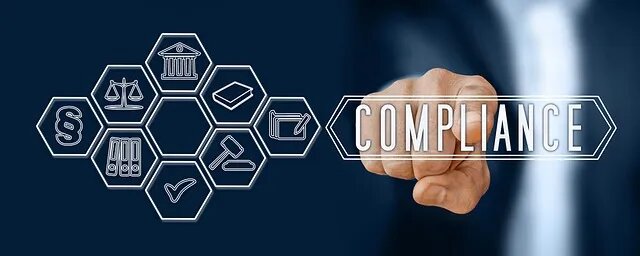In a rapidly evolving global marketplace, compliance has moved beyond being a regulatory checkbox to a cornerstone of corporate trust and reputation. A well-executed compliance strategy not only ensures adherence to laws and regulations but also cultivates credibility with stakeholders. Businesses that prioritize compliance build trust with customers, investors, and employees, paving the way for sustainable growth.
In this blog, we will explore how compliance builds trust, strengthens your brand, and ensures long-term success.
Compliance: More Than Just Rules
Compliance involves adhering to legal and regulatory requirements, but its role extends far beyond rule-following. It serves as a guiding framework that shapes ethical decision-making, mitigates risks, and promotes transparency.
For businesses, compliance represents an opportunity to demonstrate accountability and integrity. By embedding compliance into their core operations, companies send a clear message: they value doing the right thing over short-term gains.
Why Trust Matters in Modern Business
Trust is the currency of the modern economy. In an age where customers have access to countless alternatives, businesses that cultivate trust enjoy:
- Loyal Customers: Consumers prefer brands that demonstrate honesty and ethical practices.
- Attractive Partnerships: Stakeholders are more likely to collaborate with organizations that showcase compliance and transparency.
- Investor Confidence: A reputation for compliance reduces perceived risks, making businesses more appealing to investors.
The connection between compliance and trust lies in the assurance it provides. Stakeholders trust businesses that adhere to regulations because it minimizes risks and demonstrates responsibility.
How Compliance Builds Trust
1. Enhancing Transparency
Transparency is at the heart of trust. When organizations comply with regulations, they provide stakeholders with the confidence that operations are being conducted ethically and openly. For example, accurate financial reporting ensures investors can make informed decisions.
Transparency also extends to how companies handle challenges, such as data breaches or supply chain disruptions. Openly addressing issues and implementing corrective actions strengthens credibility.
2. Mitigating Risks
A strong compliance framework minimizes risks such as legal penalties, reputational damage, and operational disruptions. By proactively addressing potential issues, businesses demonstrate foresight and responsibility.
Stakeholders appreciate organizations that prioritize risk management as it reflects a commitment to stability and ethical practices.
3. Promoting Ethical Behavior
Compliance fosters a culture of ethics within an organization. Employees are more likely to act responsibly when clear guidelines and expectations are in place. Ethical behavior enhances trust not only internally but also externally with customers and partners.
To learn more about fostering a compliance-driven culture, click this link here now for actionable insights.
4. Ensuring Accountability
Compliance establishes accountability at all levels of an organization. Whether it’s a CEO or an entry-level employee, adherence to policies ensures everyone is held to the same standard.
Accountability builds trust by assuring stakeholders that no one is above the rules, reinforcing the organization’s integrity.
5. Strengthening Relationships
Businesses that prioritize compliance build stronger relationships with regulators, industry peers, and customers. These relationships are founded on mutual respect and shared commitment to ethical practices.
For example, companies with transparent supply chains gain the trust of socially conscious consumers.
The Role of Technology in Compliance
Technology plays a crucial role in modern compliance efforts. Tools such as compliance management software and automated monitoring systems simplify adherence to regulations and enhance transparency.
These tools also allow companies to:
- Track Regulatory Changes: Staying updated on changing regulations reduces the risk of non-compliance.
- Streamline Processes: Automating compliance tasks ensures consistency and efficiency.
- Generate Real-Time Reports: Providing stakeholders with real-time data fosters confidence and trust.
Integrating technology into your compliance program can transform it into a strategic advantage.
Compliance and Reputation Management
Reputation is one of a company’s most valuable assets. A single compliance violation can tarnish years of goodwill, leading to lost customers, legal battles, and financial losses.
Conversely, a strong compliance program enhances your reputation by showcasing your commitment to ethical practices. Companies with positive reputations are more likely to attract top talent, loyal customers, and valuable partnerships.
Steps to Build Trust Through Compliance
1. Start at the Top
Leadership must champion compliance initiatives and set an example. When executives prioritize compliance, it reinforces its importance across the organization.
2. Develop Clear Policies
Establish and communicate policies that align with regulatory requirements and company values. Ensure that these policies are accessible and easily understood by all employees.
3. Invest in Training
Regular training sessions equip employees with the knowledge to navigate compliance challenges. Engaging and interactive programs ensure better retention and application.
4. Monitor and Adapt
Compliance is an ongoing process. Regular audits and monitoring ensure your program remains effective. Be prepared to adapt to regulatory changes and emerging risks.
5. Foster Open Communication
Encourage employees to report potential violations without fear of retaliation. A robust whistleblowing mechanism demonstrates your commitment to accountability and integrity.
Measuring the Impact of Compliance
To assess the effectiveness of your compliance program, consider the following metrics:
- Number of Violations: A reduction in violations indicates progress.
- Stakeholder Feedback: Positive feedback reflects increased trust and confidence.
- Audit Results: Successful audits with minimal findings are a good sign.
- Employee Engagement: High engagement suggests employees value compliance initiatives.
Tracking these metrics allows you to refine your program and maximize its impact.
Conclusion
Compliance is no longer just about following rules; it’s about building trust and fostering a culture of accountability and integrity. Organizations that embrace compliance as a strategic priority position themselves for long-term success.
By enhancing transparency, promoting ethical behavior, and strengthening relationships, compliance transforms from a regulatory burden into a powerful tool for reputation management.





